Introduction to DevOps Projects
DevOps projects help in collaboration between development and operations. DevOps is a mindset rather than a technology. Continuous Development, Continuous Testing, Configuration Management, Continuous Integration, Continuous Deployment, and Continuous Monitoring all fall under the DevOps umbrella. The following blocks try to compensate for the DevOps Lifecycle Management: Plan, code, build, test, release, deploy, operate, and monitor your application the DevOps Projects mentioned below will help you in getting your hands-on experience. It’s an approach that stresses the interaction between software developers and platform administrators.
Benefits of DevOps
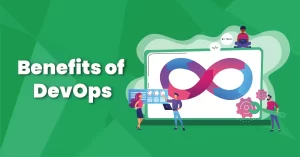
DevOps projects advocates tout a slew of economic and technological advantages, many of which may lead to happy consumers. The following are some of the advantages of DevOps projects:
- Product delivery that is both faster and better.
- Issue resolution time is shortened, and the complexity of the problem is minimized.
- Scalability and availability are improved.
- Operating settings that are more stable.
- More efficient use of resources.
- Automation will become more prevalent.
- Increased transparency into system results.
- Increased creativity.
Background of DevOps
Agile software development and lean programming are at the heart of many DevOps projects strategies for optimizing software development and deployment. However, DevOps projects arose from a number of grassroots efforts to align the activities of developers and their operations team peers.
In the early 2000s, it was necessary to sustain the availability of famous websites like Google and Flickr in the face of tremendous traffic. As a result of this necessity, software reliability engineers (SREs) were hired, who worked closely with developers to verify that the sites would continue to function after the code was launched into production.
At a conference in 2009, Flickr developers John Allspaw and Paul Hammond presented their own DevOps projects style technique. “10+ Deployments per Day: Dev and Ops Cooperation at Flickr,” was the title of their presentation. Patrick Debois hosted the first “DevOps Day” in Belgium the same year. As more DevOps Days were conducted throughout the world, a #DevOps hashtag was created, which grew in popularity.
In the years afterward, industry and open-source technologies and frameworks have been created and proposed to help DevOps projects achieve their aims.
DevOps Realtime Projects that are currently driving the DevOps Technology
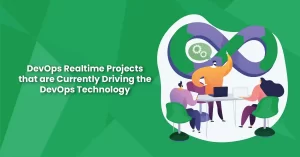
1. Git
2. Jenkins
3. ELK Stack
4. Ansible
5. Kubernetes
6. Nagios
7. Docker
8. Gradle
9. Puppet
10. Selenium
Also read: Docker interview questions and answers
DevOps Realtime Projects and their Fundamentals:
1. GIT
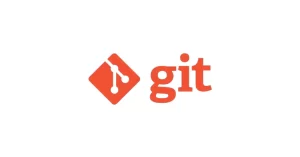
Git is now one of the best DevOps realtime projects version management standards throughout the world. What is it, exactly?
Git is a version control system with a distributed architecture. A local clone of the project is a complete version control repository in this case. Working offline or remotely is a breeze with these fully functional local repositories. Developers commit their work locally, then sync it with the server’s copy. Clients must synchronize code with a server before producing new versions of code under the centralized version control paradigm.
Git is a brilliant option for any team because of its versatility and popularity and is one of the best DevOps projects.
Git is already familiar to many developers and college grads. The Git user community has generated a wealth of resources for developers to learn from, and Git’s ubiquity makes it simple to receive support when required. Git is supported by nearly every development environment, and Git command-line tools are available for almost every major operating system.
Git Basic principles:
Git makes a commitment every time you save your work. A commit is a time-stamped snapshot of all files. Git utilizes the previously saved file if a file has not changed between commits. Other systems, on the other hand, save an initial version of a file and maintain track of deltas throughout time. Commits create a graph of the history and development by linking to other commits. Reverting code to a prior commit, inspecting how files changed from one commit to the next, and reviewing details like where and when changes were made all are possible.
In Git, commits are identifiable by a unique cryptographic hash of the commit’s contents. Because Git encodes everything, it’s impossible to make modifications, delete data, or damage files without Git noticing and is widely used as one of the best DevOps projects.
Git’s Benefits
Simultaneous development is a term that refers to the development of two or more. Everyone has their own local copy of the code and may work on their own branches at the same time. Git may be used offline since practically all operations are performed locally.
Releases that happen more quickly. Branches allow for simultaneous and flexible growth. You may release code from the main branch since it is stable and high-quality. Work in progress is stored in feature branches and is later merged into the main branch. It is simpler to maintain stable code and ship upgrades more rapidly by isolating the release branch from work in progress.
Community support is strong.
Because Git is transparent and has become the de facto industry standard for version control, teams have a plethora of tools and resources to choose from. When contrasted to other version control, Git has a large community that makes it easy to receive help when needed and is useful in several DevOps projects.
2. Jenkins
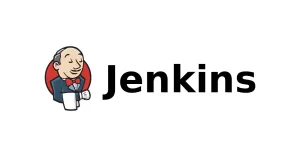
Jenkins is indeed an open-source automation platform that may be used to establish an automated pipeline for most software development, testing, and deployment operations. Jenkins is the second-best DevOps realtime project which also provides a collection of plugins that may be used to help the development, deployment, and automation of any DevOps projects.
Jenkins is simple to set up and configure. It can be installed as a native package, launched from a portable installation on a system having Java Runtime Environment, or brought up as a docker image (JRE). Jenkins was built with a master-slave architecture to effectively spread work over numerous workstations, allowing you to collaborate as a team to build apps, test them promptly, and deploy th
em to production straight away.
Uses of Jenkins in DevOps Projects
Jenkins is used in DevOps projects to create and test your software projects, making it easier for the developers to integrate changes for the project and for users to get a new build. It enables you to release your software on a continuous basis by interacting with a wide range of testing and deployment methods.
Organizations may use Jenkins to automate the software development process and speed up the process. Jenkins combines a variety of development life-cycle operations, such as build, documentation, test, packages, stage, deploy, unit testing, and more. Jenkins uses plugins to do Continuous Integration. Plugins allow various phases in DevOps projects to be integrated. If you wish to integrate a certain tool, you must first install the tool’s plugins and is one of the best DevOps projects.
Git, Maven 2 projects, Amazon EC2, HTML publishers, and so forth.
Advantages:
- It’s an open-source program with a wide customer base.
- It is simple to set up.
- It features over 1000 plugins to assist you with your job. If a plugin is still not available, you may create one and share it with the community.
- It is totally free.
- It is implemented in Java and hence portable throughout all major pillars.
Main features of Jenkins in DevOps Projects:
*Adoption- Jenkins has a large user base, with over 147,000 active installations and over 1 million users worldwide.
*Plugins: Jenkins has over 1,000 extensions that allow it to interface with the majority of development, testing, and deployment technologies.
3. Elk Stack
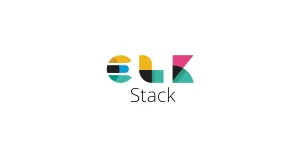
The ELK stack is an abbreviation for three prominent projects: Elasticsearch, Logstash, and Kibana. The ELK stack, also known as Elasticsearch, allows you to aggregate logs from all of your systems and applications, analyze them, and visualize the results for application and infrastructure monitoring, speedier troubleshooting, security analytics, and more. The ELK Stack is well-liked because it addresses a need in the log analytics market.
As your IT infrastructure migrates to public clouds, you’ll need a log management and analytics solution to monitor it and analyze any server logs, application logs, and clickstreams. At a fraction of the cost, the ELK stack delivers a simple yet comprehensive log analysis solution for your developers and DevOps engineers to acquire vital insights on failure diagnosis, application performance, and infrastructure monitoring and is one of the best DevOps projects.
The most important elements are:
- Elasticsearch: Elasticsearch is indeed a full-text search analytics engine that is extremely scalable. It’s a Java-based open-source solution with industry-standard features. It provides a distributed, multi-tenant architecture with the RESTful Web interface, allowing several users to access the platform at the same time.
- Logstash: A centralized logging system that also aids in log enrichment and processing, Logstash is a useful component. To store records, you can parse certain fields in the logs and transmit them to the Elasticsearch index.
- Kibana: Kibana is a data visualization and analytics tool that works with data stored in the Elasticsearch index. Data saved in Elasticsearch indices may be searched and seen.
These many components are frequently used to monitor, debug, and secure IT settings when used together (though there are many more use cases for the ELK Stack such as business intelligence and web analytics). Beats and Logstash gather and process data, Elasticsearch indexes, and stores it, and Kibana offers a user interface for querying and displaying it.
4. Ansible
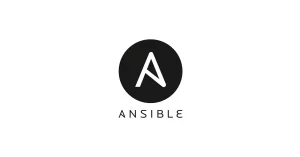
Ansible is an automation tool that helps with configuration management, software provisioning, and application deployment. Michael Dehaan, the creator of the provisioning server program cobbler and a co-author of the Func framework for remote administration, built the platform. It is a component of Fedora Linux, which is owned by Red Hat Inc. and is available as additional packages for Red Hat Enterprise Linux, CentOS, Oracle Linux, Enterprise Linux (EPEL), Scientific Linux, and other operating systems. It is used to automate operations such as software installation and so forth and is one of the best DevOps projects.
Ansible in DevOps Projects
For coordination, automation, configuration, and monitoring of IT infrastructure, Ansible is the most popular DevOps tool. The benefit of Ansible in DevOps is to adapt and scale in pace with the demand. The advantages of Ansible in DevOps are as follows:
- The feedback control system is accelerated more quickly
- Bugs are discovered sooner rather than later
- Risk due to lack of proper knowledge is lessened
- The deployments are trustworthy
- The IT infrastructure is coordinated
- The deployments are faster
- Need for automation
- Version control and configuration management
- Orchestration of the IT Infrastructure
Why do we need ansible in DevOps Projects?
Ansible is quite handy, and you’ll enjoy it if you have four or five web servers to set up and deploy, as well as more than four database servers to configure and install. There are programmes in the web servers and it links the database management systems at the backend. The typical situation now requires you to configure and operate these servers independently. These servers, on the other hand, will get numerous programme upgrades. Even a system administrator will be overwhelmed if there are more systems with different settings. These duties are difficult to do and control the number of servers without investing a lot of work into system administration and development and are one of the best DevOps projects.
5. Kubernetes
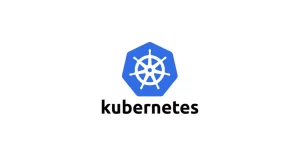
Kubernetes is a microservices system that simplifies container deployment, scaling, and administration. Cloud-Native Computing Foundation now maintains it though Google initially created it. Kubernetes is one of the most important skills for cloud and DevOps professionals and also in DevOps Projects.
Why is Kubernetes important for DevOps Projects?
The question now is how Kubernetes can aid DevOps. It allows engineers to communicate their dependencies to IT operations. One of the most compelling reasons to use Kubernetes for DevOps is to reduce the burden. It also resolves inconsistencies across various contexts. It enables developers to respond to consumer needs while also depending on the internet for a variety of functional apps.
Kubernetes make container jobs easier. Canary deployment, rolling upgrades, and horizontal auto-scaling are all made easier. The DevO
ps Managed Services plays a critical role in simplifying development, testing, and deployment pipelines and is one of the best DevOps projects.
Benefits of Kubernetes with DevOps:
- Software distribution in a timely manner with greater compliance Allows for continuous improvement.
- Improves teamwork and transparency among the team(s) in charge of delivering the product.
- Reduce development expenses and security concerns in a cost-effective manner.
Challenges
Despite the numerous advantages that Kubernetes provides, there is a stumbling block. Kubernetes is difficult to set up and operate, and it will require a highly competent person to administer. The configuration may appear basic and easy to construct and run to someone who is unfamiliar with containers or Kubernetes in particular.
However, to make it production-ready, you’ll need extra features like maintenance, backups, and recovery procedures. If you’re thinking about using Kubernetes, be sure you have the highly qualified resources to provide your company an advantage.
6. Nagios
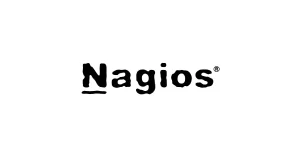
Nagios is a popular monitoring tool that has been around for quite some time. It continues to monitor apps and servers, and in the event of a breakdown, Nagios will immediately transmit alerts to the team. Teams can then swiftly take action to limit downtime and mitigate the effect on the company.
The logs of a distinct failure event can also be stored by Nagios DevOps projetcs. This aids in the prediction of outages caused by mistakes as well as the detection of security threats. Respectively agentless and agent-based architectures are supported by Nagios. Nagios has a large and active community that helps to improve the programme. There are hundreds of plugins and add-ons available right now. Using programming languages such as Python, Perl, shell scripts, and others, Nagios allows users to create their own monitoring systems and is it widely used in
What is the purpose of the Nagios tool in DevOps Projects?
- Detects all forms of network or server faults
- Helps you to uncover the underlying cause of the problem which helps you to get a lasting solution to the problem
- Monitoring of your complete infrastructure and business activities on a continuous basis
- Allows you to keep track of server performance and fix problems
- Aids in the planning of infrastructure improvements before out-of-date systems fail
- You can ensure the service’s security and availability
- In a crisis scenario, automatically solve difficulties
Features of Nagios
- Secure, manageable, and somewhat scalable
- A good database and log system
- Web designs that are both informative and appealing
- Send notifications automatically if the situation changes.
- If the services are working properly, with no need to verify if the host is still alive.
7. Docker
Docker is a popular container technology for hosting applications and services. It enables operating systems to offer lightweight containers. Unlike classical virtualization, which virtualizes the hardware, containerization virtualizes the operating system, allowing various containers to use the same OS libraries and utilities. Containers, in essence, share the operating system kernel with other containers, allowing each container to execute as a separate process in its userspace and is used in several DevOps Projects.
Docker benefits
- High return on investment and cost reductions
- Standardization and productivity
- compatibility and maintenance
- Quick deployment
- Configurations that are faster
- Effortless mobility
- Continuous deployment and testing
- Isolation, classification, and security are all terms used to describe how people are treated.
Why should we study Docker technologies?
Docker software is cutting-edge technology right now. In terms of disrupting software development, operations, frameworks, testing, and compliance procedures, it is also one of the most intriguing technologies of the previous decade.
For developers, Docker is quickly becoming a must-have technology. Containers and Docker’s architecture allow you to operate without relying on external dependencies. Docker helps developers to concentrate on what matters most instead of bothering about the environment in which their programme operates.
8. Gradle

Gradle is a prominent open-source build automation system in the Java, Groovy, and Scala communities. Android Studio, for example, utilizes Gradle to create Android apps. Nonetheless, there are several reasons why you should use Gradle in your project, even if it is not written in Java, Groovy, Scala, or in DevOps Projects.
Gradle is a build automation tool that is well-known for its versatility in software development. The construction of apps is automated using a build automation tool. Compiling, linking, and packaging the code are all part of the construction process. With the aid of building automation technologies, the process becomes more uniform.
The main languages supported are Java, Python, C, C++, Groovy, etc. It has support for various Integrated Development Environments (IDE) and is used in DevOps Projects.
9. Puppet
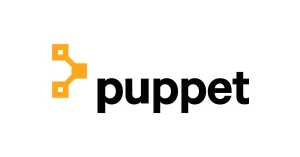
Automation allows you to move more quickly while maintaining stability and security. Now is the moment to use automation and tried-and-true methods to propel your team — and your deployments — ahead.
Puppet Enterprise enables you to deploy infrastructure changes more quickly, release better software, and do so with confidence and use it in several DevOps projects.
The following are Puppet’s actions:
- Puppet enables us to create unique settings for each host.
- It continually monitors the server for configuration changes, and if any are made, it instantly switches the hosts to a predefined configuration.
- It has control over a large amount of infrastructure, allowing the centralized settings to be implemented across the board.
- It’s also utilized as an automated deployment mechanism for all of the servers’ applications.
- Infrastructure as a Code is implemented, with regulations and configurations specified in the code.
10. Selenium
Seleni
um is a web application testing tool that is free and open-source. Selenium IDE is a Firefox add-on that allows you to test web apps using record-and-play. To automate the tests, a WebDriver component connects with the web browser. Selenium Remote Control, Selenium Grid, and the Selenium client API are further Selenium components.
Selenium In DevOps Projects
Selenium test developers, as members of the UI testing team, must synchronize and coordinate their test design and execution according to the schedule and triggers set in their continuous integration or continuous delivery tools or platforms.
Test design must be more flexible, simple, and error-free. There is a trend toward improving current or developing new test automation frameworks such that they may effortlessly connect with continuous integration/continuous delivery pipelines.
Additionally, enterprises are utilizing Machine Learning and AI to solve the difficulties of complexity and scalability in testing environments. To overcome the difficulties, businesses are looking towards AI research fields including Computer Vision and Natural Language Processing.
DevOps Projects For Practice:
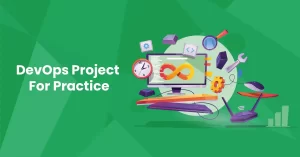
Here are 6 DevOps Projects For practice ideas you can try building when you’re learning about DevOps principles and practice, also develop your DevOps projects in all of the projects mentioned below:
-
Project 1– A website
-
Project 2– Create and run a CI/CD pipeline for an app
-
Project 3– Deploy an application (with high availability) with a database
-
Project 4– Create a monitoring dashboard for an application
-
Project 5– Deploy a containerized application
-
Project 6– Create an application with an API and deploy it to Kubernetes
You could very well be feeling overwhelmed by the mountain of work ahead of you, whether you’re transitioning into DevOps Projects from such a career as a sysadmin or trying to enhance your DevOps abilities for entry-level employment. Let’s change that with some practical project ideas you can start working on right now to develop your abilities.
Working on your own DevOps projects for practice will teach you how to:
- Explore new technologies.
- Documentation and internet resources should be read.
- Locate user forums and communities Troubleshoot difficulties on the internet (a crucial talent!)
- shattered knowledge boundaries.
These ideas for learning more about DevOps Projects real-time were derived from two sources:
- real-life scenarios in larger organizations.
- the person’s credentials in job postings.
Conclusion
To conclude, The closer connection between “Dev” and “Ops” permeates every step on the DevOps lifecycle: from initial application planning to code, create, test, and release phases & on to deployment, operations, and regular monitoring. We hope that this blog has thrown some insight into DevOps initiatives and techniques.
Frequently Asked Question’s
1. What are the 7 DevOps practices?
The 7 DevOps projects practices are as follows:
- Continuous development. This practice spans the planning and coding phases of the DevOps lifecycle
- Continuous testing
- Continuous integration (CI)
- Continuous delivery
- Continuous deployment (CD)
- Continuous monitoring
- Infrastructure as code
Your developers and operations teams may accomplish these goals using the DevOps paradigm. Microservices and continuous delivery, for example, enable teams to assume responsibility for services and deploy updates more quickly. Here are the top DevOps projects for you.
3. What are the pillars of DevOps?
Leadership, collaborative culture, DevOps design, continuous integration, continuous testing, elastic infrastructure, continuous monitoring, continuous security, and continuous delivery are the nine pillars of DevOps.
DevOps engineers should have a strong understanding of coding and scripting. Python, Ruby, Python, Java, Javascript, PHP, Bash, Shell, and Node are all examples of programming languages. js is one of the most popular programming and scripting languages.
5. What is the main goal of DevOps?
The basic purpose of DevOps is to increase the flow of value from the concept to the end-user and DevOps projects help in achieving it. Obviously, a company’s culture must change in order for DevOps to be successful, thus culture is a key priority, but DevOps’ purpose is to make value delivery more effective and efficient.
The DevOps work profile is neither difficult nor demanding. It is dependent on the particular work setting and the company’s way of operation. DevOps, in my opinion, is a broad job description made up of several sectors.
7. Is DevOps a software engineer?
DevOps engineer is a software automotive technician in an environment where development and operations responsibilities are combined in the creation and launch of products. DevOps projects are similar to software automotive.
DevOps culture is all about developers and operators working together and sharing responsibility for the product they create. Increasing openness, communication, and cooperation across development, IT/operations, and “the business” is one way to do this.
Docker is a technology or platform designed to make the process of developing, deploying, packaging, and shipping out programmes, as well as its components such as modules and other dependencies, easier.
10. How hard is IT to get a DevOps job?
DevOps is not difficult, but it may be demanding. The most difficult aspect of devops is that you must understand and grasp a wide range of technologies, including cloud, automation, and security. If you can manage it, it’s a wonderful job to have but every day brings something new and interesting.
11. Is DevOps a high paying job?
The reported highest salary offered as Senior DevOps Engineer is ₹45lakhs. The top 10% of employees earn more than ₹35lakhs per year. The top 1% earn more than a whopping ₹42lakhs per year.
12. What is DevOps engineer salary?
DevOps Engineer pay levels in India range from 4.0 Lakhs to 14.0 Lakhs per year, with an annual salary of 6.0 Lakhs. Salary estimates are based on DevOps Engineers earning a salary, The highest salary a Senior DevOps Engineer could perhaps earn per year is 28.0 Lakhs.














One response to “Top 10 DevOps Projects for Aspirants”
[…] To run applications like notepad, internet browser, and operating system is required. The word operating system is self-explanatory, a system that helps operate the computer. Some popular operating systems are Windows, Apple OS X, and Linux. These popular operating systems are also among the best OS for programmers. After installing your selected operating system you can even try these DevOps Projects. […]